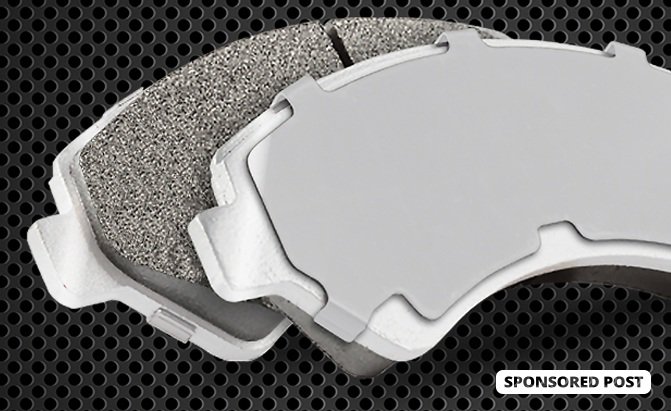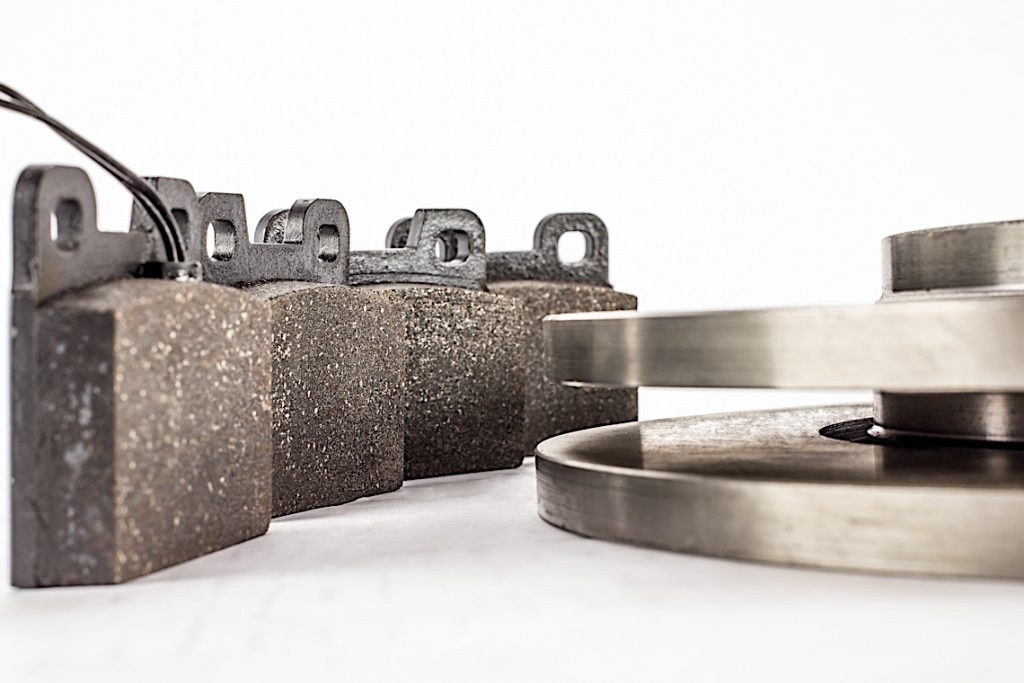-This AutoGuide article answers questions for consumers about brake pads and brings up the most important component of a brake pad, the backing plate.
What is the Best Brake Pad Material?

By AutoGuide.com Staff
From polishes and waxes, to filters and engine oil, choices are numerous and daunting when it comes to selecting the correct products for your car, truck, coupe or crossover. Options abound—and each alternative has its own set of unique attributes, promises, and technologies. But what is the best brake pad material?
Choosing the correct set of brake pads for your vehicle can be especially confusing. After all, brake pads are an important component used to help your vehicle do one of its most important jobs: stopping.
Not all brake pads are built the same. Each is created using an assortment of materials and processes that dictate their performance, noise levels, price, warranty, and ability to perform consistently and safely through their life. Longer brake pad life is a common purchase factor for many shoppers, since it saves you money.
The differences in brake pad material and construction can vary widely from one alternative to the next, but there are two common threads worth understanding.
First, brake pads are consumable. Like a pencil eraser, they wear out a little every time they’re used, until they need to be replaced.
Second, all brake pads consist of a layer of wearable ‘friction material’ that’s attached (often with glue) to a metal ‘backing plate’.
Imagine an Oreo cookie with the top piece removed: the solid cookie on the bottom is the backing plate, and the slightly smaller white layer of icing is the friction material.
